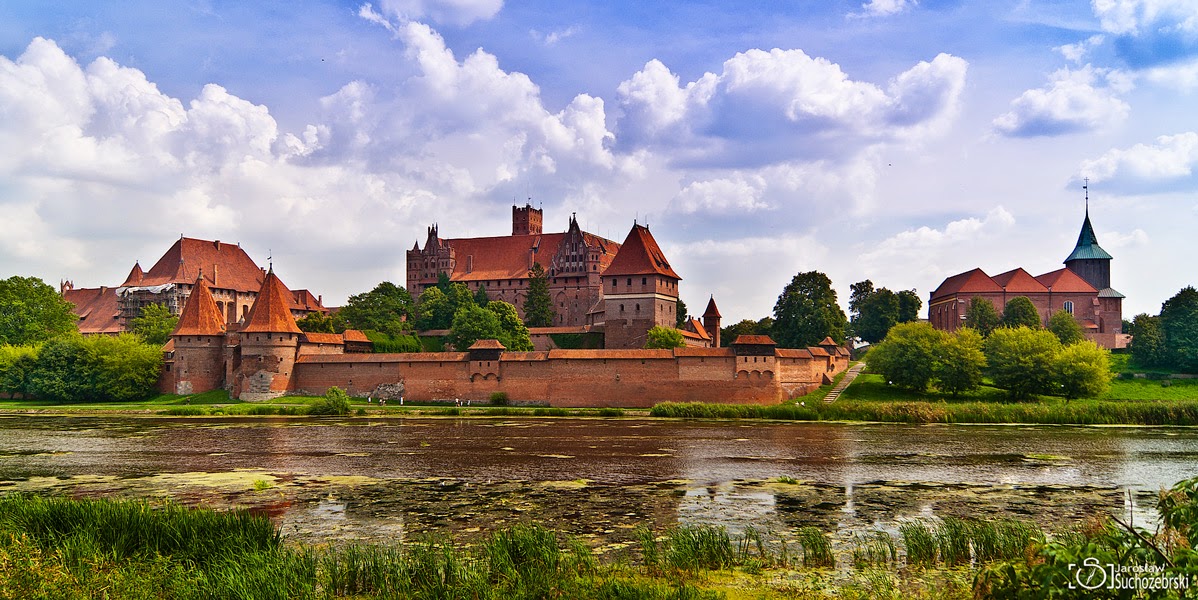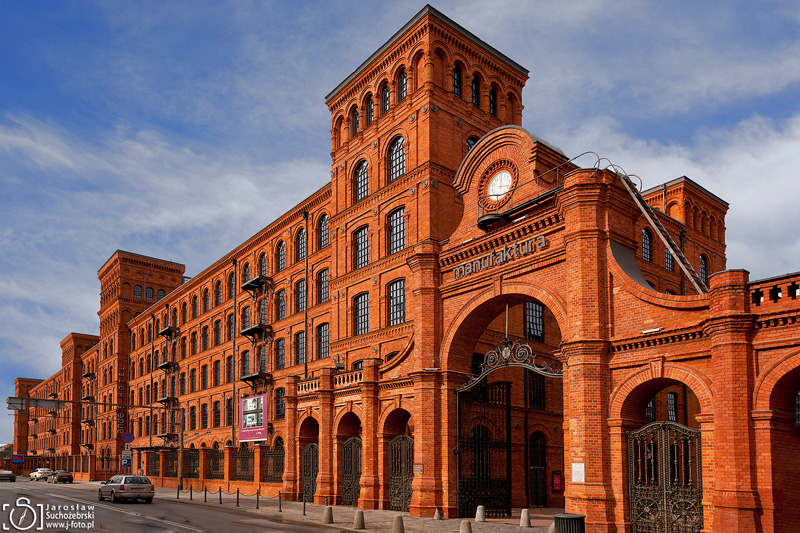Palace in Mała Wieś - beautiful monument of classicism in Poland
Mała Wieś is a small village located 50 km south of Warsaw, near Grójec. In the village is located a beautiful palace surrounded by an English-style park, a French garden, as well as a fruit farm, and ponds. The facility is located on the edge of the larch reserve. The palace is one of the most beautiful monuments of classicism in Poland, which after the renovation is returning to its former glory.
History
The palace in Mała Wieś was built in the end of 18th century on the place of the wooden manor house of Walicki family. The Walicki family distinguished by their great patriotism. Bazyli Walicki was the voivode of Rawa Voivodeship and participant of the Four-Year Sejm.
Bazyli, and friend and counsellor to Polish King Stanisław August Poniatowski, begun a tradition of hosting distinguished and famous individuals in the palace. The king himself have visited palace in Mała Wieś.
The Palace has been owned by the same family for 159 years. Later on, it was owned by such known aristocratic families as Rzewuski or Zamoyski, which were the continuation of Walicki family. Even though in the beginnings of the II World War German Army stationed in the Palace, their presence did not prevent the owners – Morawski family – from secretly hosting homeless or persecuted people. After the Warsaw Uprising and Warsaw’s evacuation, it became a safe haven for many Pole and Jews.
The land reform after the WW II meant eviction for the last owners. The palace was nationalised. In the next years, the Palace served first as a school and then as a summer residence of the Ministers of the Communist government. For many years Palace and park were not available to visitors. In 2008 Morawski family managed to get their palace back.
Contemporary times
The Palace was bought by the Baranski family. Renovated in the years 2013-2016 the palace has been adapted for service purposes. At the site of the old reception hall the New Orangery - was built, architecturally referring to the Old Orangerie of the Royal Baths in Warsaw. The four buildings, which used to serve as the back office for the mansion (which included laundry, kitchen or pantry), were converted into hotel rooms, while the coach house was converted into a restaurant. The layout of the French garden was restored. Its biggest decoration is a rose garden.
Palace interiors
The Palace was built in a classicist style on a rectangular plan. There is a two-storey, basement, adorned front porch supported by eight columns with ramps. In the tympanum, there is the coat of arms of Walicki - Łada. The façade of the garden is decorated with a projection, also with tympanum with donor coat of arms.
In the entrance hall of the Palace, there is a statue of the Greek philosopher Diogenes. On the ground floor, there is also a chapel, offices and library. The Palace staircase is decorated with military motifs and a beautiful modernist chandelier made of crystals. There is also a Latin sentention: "Discite victuri patrium post fata napotes velle deo patriae vivere velle mori".
On the first floor of the Palace, there are eight rooms, which are decorated with original frescoes. The Hall of Wise Men which was a library is decorated with portraits of ancient philosophers: Homer, Socrates, Plato, Aristotle, Hippocrates and Cicero.
The Pompeian Hall has been decorated with unique grotesque frescoes. Compositions are composed of floral and human hybrids, as well as motifs from Greek mythology.
Right next to the Pompeian Hall is located the former dining room - Warsaw Hall. On the walls are painted panoramas of Warsaw and a panoramic view of Naples with a Vesuvius.
Other rooms include the Gold Salon, Gray Salon, Princes Suite and Bathroom.
The palace served a business and service function. There are concerts, business meetings, gala dinners, weddings and other events. There is a great restaurant. There are also guided tours. The tour includes historical interiors of the palace and garden. Around the palace are still working on the arrangement of the park (Spring 2017).
* * *
You might also like other articles about most beautiful Polish castles, palaces and fortresses (click to read)
* * *
This post is linked at:
Through My Lens - Our Word Tuesday - Travel Tuesday - Image-in-ing - Wordless Wednesday - Wednesday Around The Word - Outdoor Wednesday - Skywatch Friday - Weekend Travel Inspiration - Inspired Sunday - Seasons
























What an amazing palace!
ReplyDeleteWOW, what a stunning place to visit. The hardwood floors look beautiful, but I especially like the paintings on the walls.
ReplyDeleteLisa @ Lisa Kerner ~ Simply Living Photography
How wonderful that it is being so beautifully restored during it's change. Also good that the apparatchiks didn't ruin everything.
ReplyDeleteBeautiful to see.
ReplyDeleteA beautiful building that has been restored so that everyone can enjoy its charms. Thanks for the tour.
ReplyDeletewhat a huge property. I'm so glad it was used to help Jewish people in the war. I have Polish Jewish ancestry so this makes me happy.
ReplyDeleteTruly amazing palace.
ReplyDeleteThis palace is elegant and stately. It is nice to see that it has been maintained (and not destroyed) even during the war years. The current owners have done a good deed as the public can now see, eat, and stay here.
ReplyDeleteWhat a wonderful place to visit, love to go there
ReplyDeleteGorgeous! I'd love to explore the palace! :)
ReplyDeleteWith Love,
Mandy
Love the Trompe d'oeil (sp?). I thought it was real in the thumbnail...
ReplyDeleteWhat a fascinating and beautiful building
ReplyDeleteMollyx
I have never been to a Polish castle before but it looks beautiful! I imagine the gardens were particularly beautiful as well. Thanks for the photo tour, I feel I've had a good look around :)
ReplyDeleteWow, what a fascinating place! I love the manicured lawns and the fantastic artwork inside. Thanks for your lovely photos and the information about the Palace..
ReplyDeleteHow gorgeous!
ReplyDeleteWhat a beautiful place!!
ReplyDeleteA great place to have a walk and to visit the castle; such interesting history of the palace. The architecture is so lovely and it is fascinating to read about all the aspects regarding the place, ambiance and architecture.
ReplyDeleteA nice weekend!
Stately architecture! Thanks for the interesting history.
ReplyDeleteSuch a gorgeous palace! It seems like Poland must be covered with beautiful architecture and quaint villages. I've only been to Wroclaw and Krakow, but this summer we'll be spending a week driving from Germany into Poland and back. I know it isn't nearly enough time, but I'm really looking forward to it!
ReplyDeleteA beautiful, historic building - I'm glad it was restored and is open to the public. Grand architecture should be seen and loved.
ReplyDeleteAs always, you make me want to visit Poland immediately!! What a lovely place!
ReplyDeleteOh, my gosh-these images are breathtakingly beautiful!
ReplyDelete...what a gorgeous estate.
ReplyDeleteVery beautiful manor. To say nothing about your pictures which are absolutely gorgeous! These people should pay you for advertising their place so well. #TheWeeklyPostcard
ReplyDeleteSuch symmetry in your second capture - beautiful! Am seeing the ceramic heaters I know from living in Germany( long time ago). Also love the crown moulding in the last two captures.
ReplyDeleteYour story about World War II is a familiar one for several countries in Eur.:) Happy that the Morawski family was able to get their palace back! Love the history you provided for sharing these buildings with All Seasons!
Have a beautiful week! Again, let me know and I will delete you first entrance if you like to try again to get a better pic for the link list.
Beautiful! What a fantastic place.
ReplyDeleteVery nice photos also!
What a gorgeous Palace. You have some wonderful shots of it. I loved the Tree Lined shot.
ReplyDeleteI love the intricate paintings and designs within the palace. Gorgeous pictures, we would love to visit one day :)
ReplyDeleteFantastic architecture. Great photos.
ReplyDelete